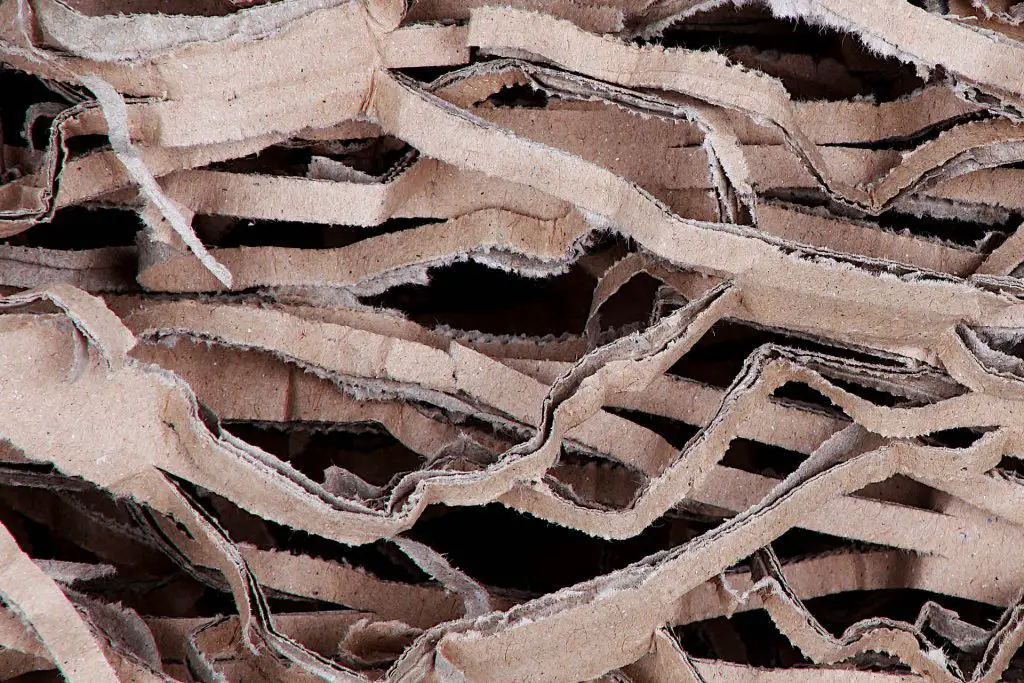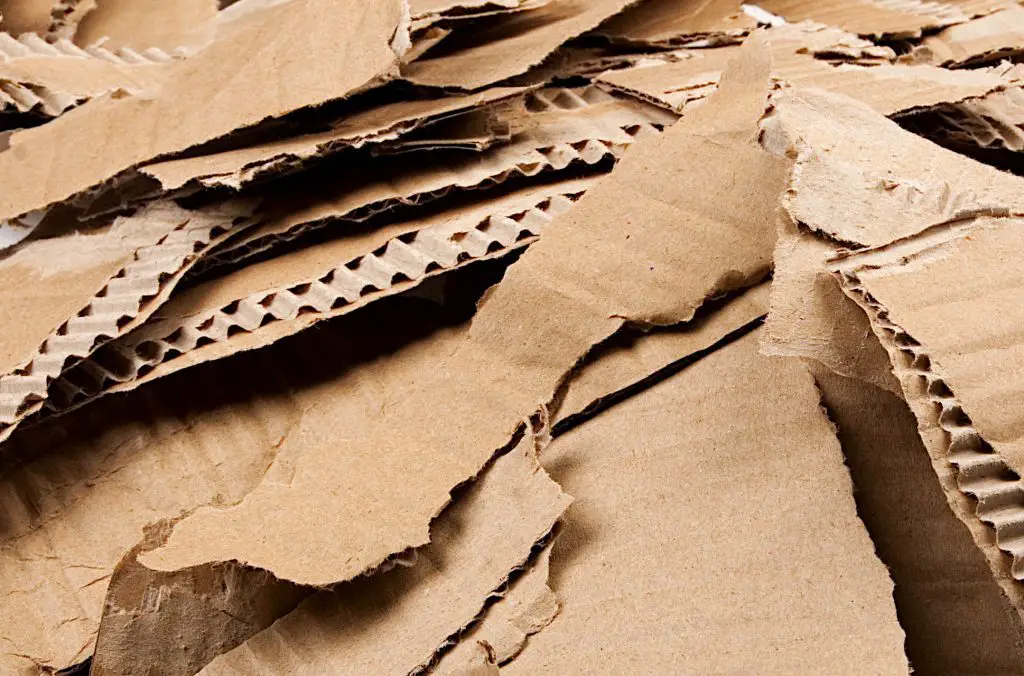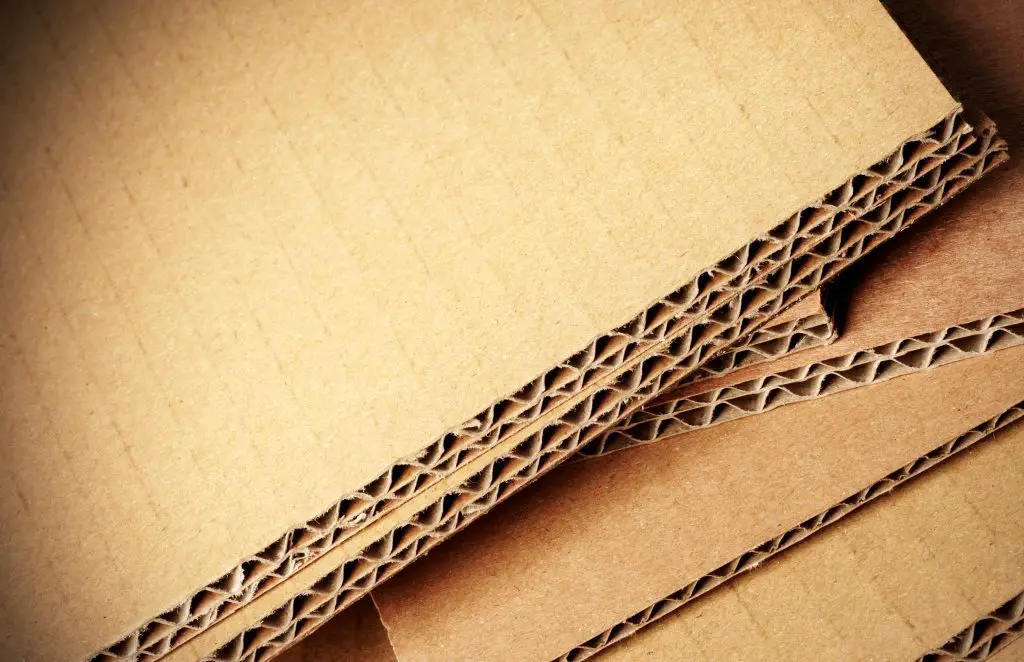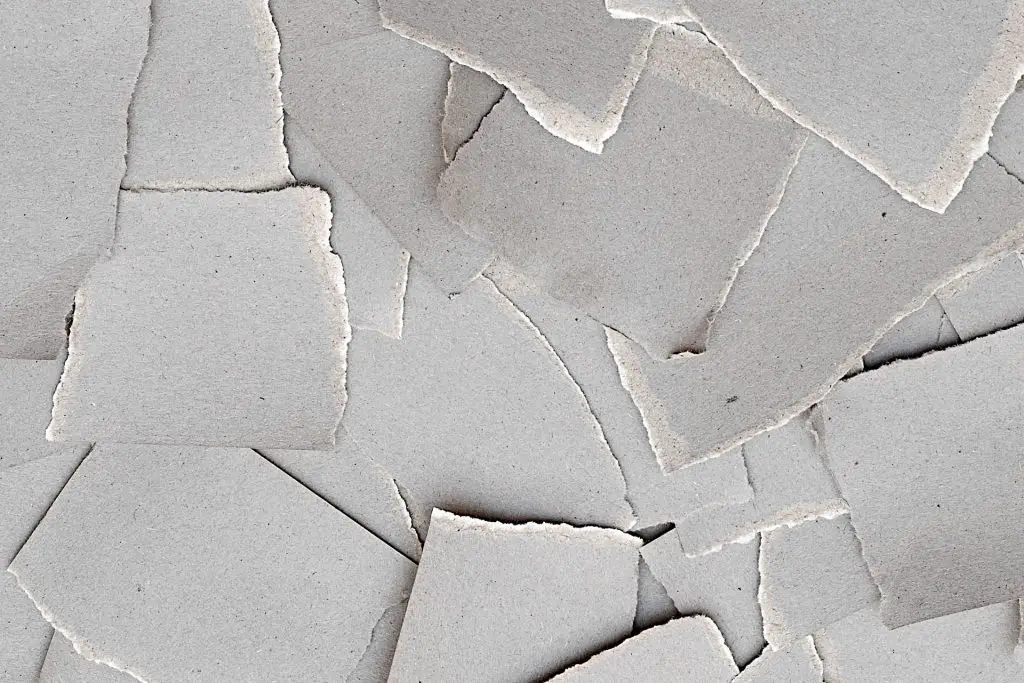How to Shred Cardboard for Compost
Most of the cardboard that we use for composting will have been in the form of a box that you have probably already flattened down, or even torn into its sections. Although you can use the cardboard like this, taking the time to shred the cardboard can make a huge difference, affecting the rate of decomposition and speeding up the composting process.
Knowing the most effective way of how to shred cardboard for your compost heap is going to save you a considerable amount of time. Beyond just tearing up the cardboard by hand, there are a number of ways in which you can speed shredding both mechanically and manually to turn it into a usable form.
However, if you want to avoid shredding we will also show you a number of ways in which you can still utilize cardboard in the composting process.
The Reason Why Shredded Cardboard Works Better In Your Compost

When it comes to composting, smaller pieces of cardboard will break down faster than large pieces. This is because more surface area of the cardboard is exposed to the microbes in your compost pile. In addition, the shredding process helps prevent clumps of larger material from forming, allowing better air circulation within the pile.
The two most important factors that will dictate the speed of your composting will be the number of microorganisms present and the size of the individual pieces of organic material.
Microbes are made up of beneficial bacteria and fungi. The fungi act as a first line of attack and break down the cellulose in the cardboard and the bacteria complete the decomposition process turning it into nutrient-rich compost.
The number of microorganisms will be controlled by the type of compost process that you are using. The size of the pieces is determined by how small the shredded pieces of cardboard are.
Shredding cardboard is likely to be especially important if you are using the high fiber composting technique where you are completely substituting organic garden waste for cardboard and paper. It can also be extensively used in vermicomposting, which has certain benefits over more traditional forms of composting and where it makes great bedding in worm bins.
Top Tip: Irrespective of the material being composted the smaller the size of the pieces of organic material, the faster they will break down as a whole. So if you can chip your branches or shred your leaves you will see finished compost sooner
Type of Cardboard
There are many different types of cardboard from corrugated to single-ply cardboard, the majority of which can be composted. The two most common for households would be corrugated cardboard, such as amazon boxes or bulk packaging boxes, or thin cardboard from food packaging, such as cereal boxes.
There are some types of cardboard, especially those that are wax or plastic coated or wrapped, that you shouldn’t shred for composting. Generally though, most types of boxes can be composted, even printed boxes.
It is more important to remove any plastic tape that may have been used to seal the boxes as this won’t decompose. Even amazon tape should be removed as although it is biodegradable and classed as compostable, in practice it could take years to decompose, and should instead be sent to industrial composting facilities.
Various Ways That You Can Shred Cardboard
There are of course a multitude of ways that you can approach shredding and the method you use will largely depend on the type of box and the number of boxes you have. You can either do it manually if you just have a few boxes or mechanize the process especially if most are corrugated cardboard.
Mechanizing the Shredding Process

There are several different ways in which you can mechanize the process, but the two most commonly available are the use of a paper shredder or, if lucky enough to own one, a wood chipper.
Shredding Cardboard with a Paper Shredder
The simplest tool for the job is to utilize a paper shredder. They come in all different shapes and sizes with obviously the more robust machines likely to be capable than the very cheapest options, although you will be surprised how much cardboard even these can shred. This is because almost all paper shredders can handle basic common types of cardboard.
There are though, a few things you need to do to prepare the cardboard for shredding. First, check the capacity of your paper shredder. You’ll need to know the maximum thickness and size of material that your shredder can handle. Many paper shredders can handle cardboard up to 3/16 of an inch thick. Finally, check the size of the cardboard. Paper shredders can usually handle pieces of cardboard up to 8.5 x 11 inches. Thirdly, if your paper shredder is small, you may need to cut the cardboard into smaller pieces.
- Separate cardboard types out into piles.
- Ensure they are of a size that will pass through the shredder, if they are too big cut them down with a knife or large pair of scissors so they will pass through.
- Pass through all the corrugated cardboard separately from single ply as they will still contain some air pockets and can be used as a separate compost layer.
- Empty the shredder bin into another box or sack ready to use when you build your compost heap.
- Now pass thinner, food packaging types of cardboard through the shredder. You should be able to pass several pieces of this type of cardboard through at once. These shreddings can be combined with other brown materials to create compost layers.
- Again Empty the shredder bin into a separate box or sack ready to use for when you build your compost heap
Speeding Up the Process with A Wood Chipper
If you are fortunate enough to own a wood chipper, your job probably got easier. These are far more robust than paper shredders and require less preparation. As long as the cardboard will pass through the entrance to the wood chipper it will easily shred the cardboard.
Manual Methods for Shredding Cardboard
If you don’t have a shredder or woodchipper you can still shed your cardboard by hand fairly easily, although most will involve a few more steps.
Using a Box Cutter
If you are feeling energetic, and don’t have much cardboard to shred, then you can do the job with a good box cutter knife. It is best to soak the cardboard for a few minutes to soften it up before cutting it into strips and then cross-cutting the strips into smaller shredded pieces.
The problem with this method it is far more time-consuming than the other methods that we shall look at and probably will result in you having to spend more energy on the cutting process.
Soaking Cardboard
One way to make cardboard more manageable for composting is to soak it in water overnight. This will help break down the fibers and make them easier to tear apart.
Start by finding a large bowl or container that can hold the piece of cardboard and enough water to cover it. Then, simply put the cardboard in water to soak, leaving it in the water overnight or longer. In the morning, the wet cardboard should be much easier to break apart. This can be done by simply tearing or with a box knife.
Indeed, the longer you leave the cardboard in the water the easier it becomes until it gets to the point that it just comes apart as you hold it. If you can get the cardboard to this stage then you can use a cordless drill with a mixer attachment to shred it into small pieces.
- Soak the cardboard in water overnight or longer. This will make it easier to break apart and shred.
- Place the soaked cardboard on a hard surface and use a sharp knife or box cutter to shred it into small pieces.
- Alternatively, if the cardboard has been left long enough so it has reached saturation point then you can pull it apart with your hands or tear it up using an electric drill and mixer attachment.
- Add the shredded cardboard to your compost pile and add layers of shredded cardboard with other organic materials such as other brown materials like leaves and wood chips and green materials such as grass clippings and food waste.
Don’t Want to Shred but Still Want to Use Your Cardboard?

If you don’t want to go to the trouble of shredding your boxes then there are still a number of ways that you can use them in the composting process. Indeed you may want to keep back some cardboard boxes from the shredding process as they can be useful in so many other guises in your composting process.
Layer Composting
As we detailed earlier the reason why the cardboard is shredded is that by doing so more of the surface area is exposed to the microbes, allowing them to break it down more quickly. You can though, use cardboard boxes that you have flattened or broken up into their sections. These flattened boxes or smaller sheets of cardboard can then be used in one or two different ways.
Weed Barrier
One problem with compost heaps is the possible contamination of weed spores from the underlying ground that you are building the heap on. Breaking down the box, so it is just a single sheet, allows you to place a layer of cardboard on the soil where the pile will be positioned.
You can then build on top of the cardboard, a layer of garden waste, a layer of kitchen waste, and a layer of soil, and repeat until you have built your pile. The cardboard sheets at the bottom of the compost heap will then act as a barrier from weeds.
As Organic Waste
Despite the fact that the cardboard has not been shredded, you can still use it as it is in your compost pile. This is because it will eventually break down and works well if using a passive composting process.
To use, in what is sometimes referred to as the lasagna method, you add layers of cardboard to the bottom of your pile. You would then add a layer of nitrogen-rich green material, followed by a layer of dry leaves or another source of carbon-rich brown material, and finally a thin soil layer. Repeat these series of layers again until your compost pile is complete
Although it will take far longer to decompose the cardboard will still help absorb any excess moisture that may be in the pile while the air pockets will help provide an initial oxygen boost to the pile.
Use as a Compost Bin
In its basic form, you can actually employ a cardboard box as your compost bin. You will need a sturdy cardboard box, the stronger the better. A single corrugated wall box is the bare minimum but if you have any double-walled or are able to stack one box inside another, even better.
In reality, there isn’t much to this. The cardboard box is just a rudimentary compost bin, but you will be surprised how effective it is. The base of the box will act as a weed barrier which, as we have mentioned above, helps drastically reduce the probability of weed spores contaminating your compost.
If you want to speed up the composting process you can do so by aerating your box. This is simple to do by passing two or three two-inch PVC waste pipes through the box at different angles. You would drill along the pipe in a line on two sides and cut the pipe long enough so that the ends stick outside the box by about three inches out on each side.
It works because air is drawn through the pipe and released into the decomposing compost by the holes along the pipe, aiding air flow and bringing oxygen to the center of the pile.
Using a cardboard box in this way would require shelter for the box as otherwise, it would disintegrate with the rain. In addition, when the compost has finished decomposing the box itself will start to decompose as the microbes look to attack it. But as it is a solid piece of cardboard this will take a lot longer than the material inside to turn into finished compost.
Cardboard for Worms

If you are using a vermicomposting technique then again cardboard can provide multiple benefits. Firstly you can feed cardboard to composting worms and also use the cardboard as a worm blanket.
Worm Farm
You can add your cardboard to your worm farm. While shredding the cardboard will help the worms consume the cardboard more quickly they will still be happy to attack slightly larger pieces of cardboard. If you haven’t got a shredder but can cut the cardboard roughly into two-inch squares then this will be fine for the worm bin.
Worm Blanket
If you don’t want to do much cutting then another alternative is to use cardboard as a worm blanket. These are generally made from products derived from natural materials such as cotton, wool, and hessian. These provide the worms with a comfortable environment to work through food scraps and other organic materials.
As items such as t-shirts, towels hessian sacks are often used as worm blankets so cardboard makes a perfect alternative. Simply cut the cardboard to size and place it at the top of your worm bin. The worms will eventually consume the cardboard, so you can just add another sheet when needed.
Summary: How to Shred Cardboard for Compost
Composting is a great way of dealing with your cardboard waste, not only is it an excellent source of carbon-rich brown material it is integral to fiber composting. However, to get it to decompose quickly then you should shred it. By shredding the cardboard, you can speed up the breakdown process and have finished compost in no time.
Paper shredders are by far the most convenient way of doing this, although wood chippers would be far quicker if you had one. If you need to shred manually then the best option is to soak the cardboard for 24-48hrs in water and you should find it literally falls apart to the touch.
If you don’t want to shred then you can always utilize the cardboard boxes as makeshift compost bins, just use the sheets to break down slowly on a passive compost pile or possibly use some as a worm blanket.
